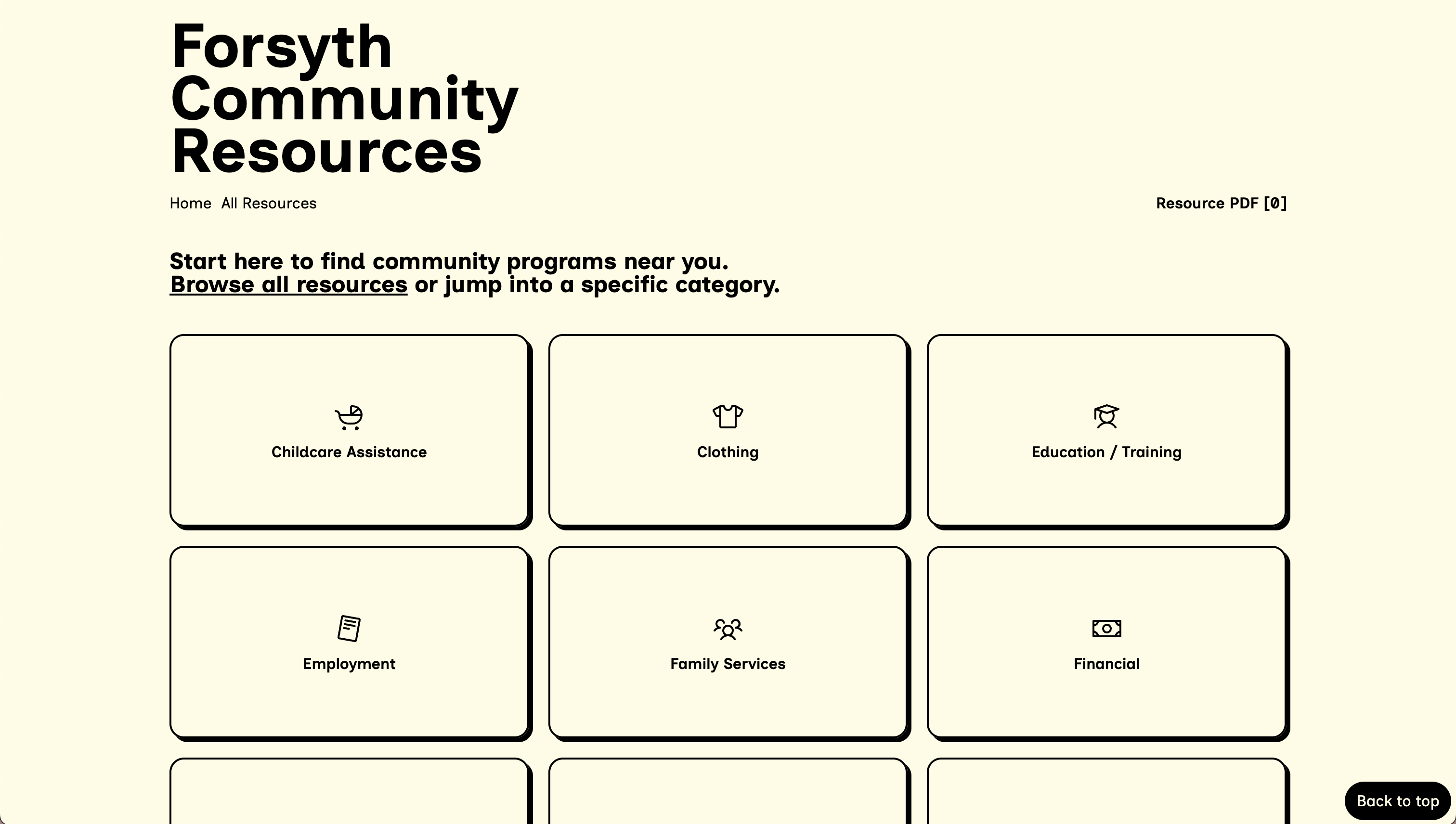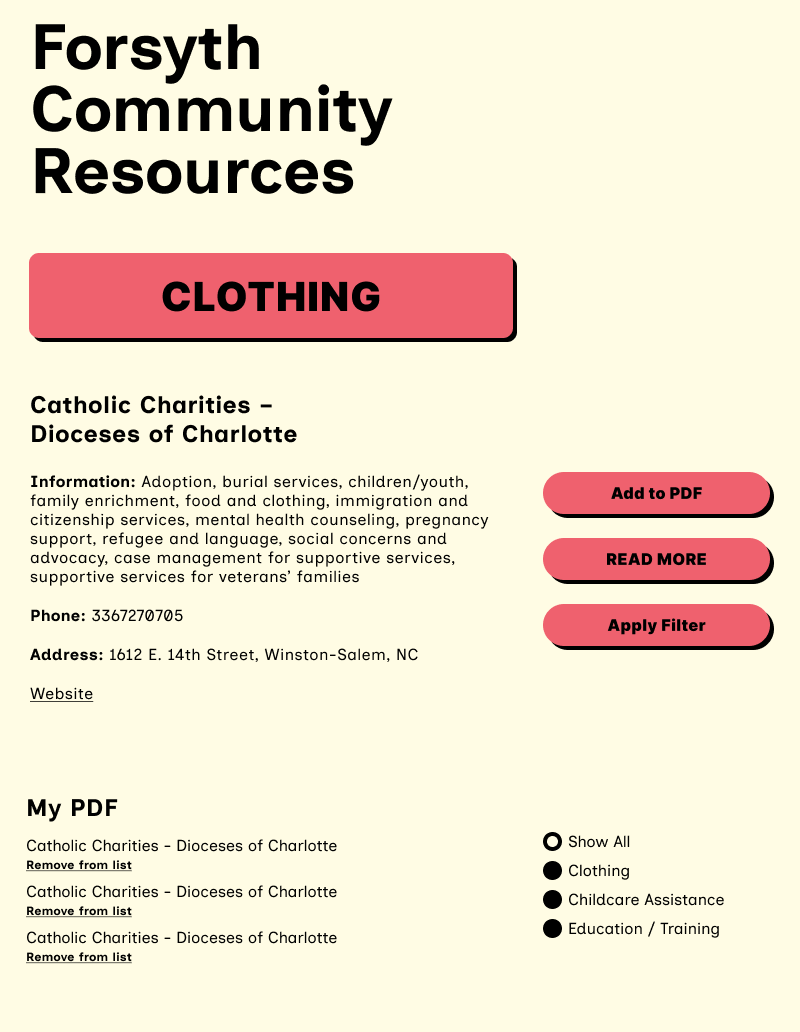OpenResource Theme

Goal
The main goal of this project was to see if I could make a digital directory of community resources thats accessible for everyone and easily replicated to have information from all communities.
Overview
The thought here was to take clunky, hard-to-update resource lists and bring them online in a way that’s easy to browse, maintain, and share… For now, that led me to a simple WordPress theme that’s still being refined and improved as I learn more about things like accessibility and usability. While the WordPress version makes the project accessible to users already familiar with the platform, long-term I’d like to make it even more approachable / platform independent.
Problem
In past roles at nonprofits, I often saw that it was hard to find reliable, up-to-date lists of community of resources. Most of the time, they were literal physical binders of papers or outdated PDFs... so... not great.
Research
This project was a bit light on the actual research. Reason being, at its core, It’s essentially a CRUD app with a PDF cart so... a very simple concept. The bulk of my research focused on how I wanted the experience to feel both in terms of the visuals and the user flow. I tried to avoid leaning on terms like “minimal” or “simple,” and instead moved towards more human terms like “accessible,” “welcoming,” and “professional” when making my style tiles. I eventually landed on the Inclusive Sans typeface and a palette generated with randoma11y for accessible color contrast.

Solution
Right now my solution is OpenResource - a lightweight, mobile-friendly WordPress theme utilizing PHP templates and ACF (Advanced Custom Fields). Some current features are:
-
A dynamic filtering system using JavaScript for asynchronous loading
-
A session-based PDF “cart” that lets users collect and download custom summaries
-
A CMS-friendly admin interface with custom post types and field groups
Approach
I started out making a PHP only prototype and converted that into a WordPress theme to make it more accessible for non-technical users. I used semantic HTML, modular CSS, and progressive enhancement to build a working alpha up and running without getting stuck on it being perfect. I chose this approach to help me showcase the project publicly, start receiving feedback, and leave room for others to customize or contribute.
Challenges
-
Preserving filter state across page loads required combining PHP sessions with JavaScript... something completely new to me haha.
-
Balancing simplicity with real-world usefulness (deciding when to go native vs when to lean on plugins).
-
Designing for two very different users: the admin maintaining the directory and the visitor browsing the resources.
Results
So right now OpenResource is live, functional, and available for others to use via GitHub. It’s still a work in progress, but that’s on purpose! I wanted to avoid perfection paralysis and get the project out in the open. This process helped me solidify my knowledge of PHP and WordPress development while also teaching me to balance ambition with momentum. It’s already being used to power forsythcommunityresources.com, and I’m actively iterating as I learn and grow.








